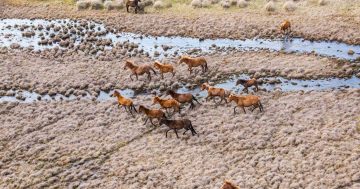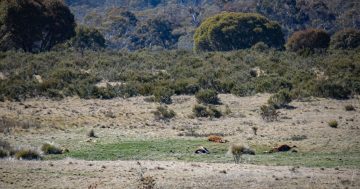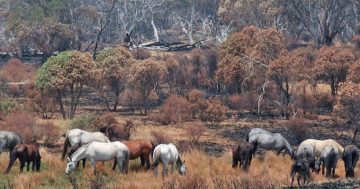
Member for Monaro Nichole Overall says the community needs confidence the Kosciuszko Wild Horse Heritage Management Plan is being delivered as envisaged and with animal welfare front and centre. Photo: Snowy Brumby Photography Adventures with Michelle and Ian.
Content warning: This article uses images some readers may find distressing.
A ceasefire has been declared in Kosciuszko National Park (KNP) by NSW Environment Minister James Griffin pending a review of safety measures applicable to ground shooting operations under the Wild Horse Heritage Management Plan.
The review, expected to be complete by 4 October, comes in the wake of public uproar following the recent shooting of 11 wild horses near Kiandra.
The horses, or brumbies, were part of a heritage mob known as the Kiandra greys – given their historic links to pastoral populations – and included several heavily pregnant mares.
The Wild Horse Heritage Management Plan, adopted in November 2021, identified the heritage value of wild horse populations in parts of the park, by retaining a wild horse population of 3000 in 32 per cent of the park, areas that are strongly associated with wild horse heritage values.
The National Parks and Wildlife Service (NPWS) says the 11 horses were culled in accordance with the highest animal welfare standards as part of the service meeting its legal obligations under the Wild Horse Heritage Management Plan.
In a statement, it said RSPCA NSW had independently responded to animal cruelty complaints received and its investigation found no evidence of a breach under the NSW Prevention of Cruelty to Animals Act 1979.
The NPWS has rejected media reports that horses bled to death and were shot in the stomach. It has not commented on the removal of an ear from most of the dead horses.
Former MP Peter Cochran, a fifth-generation mountain cattleman and owner and operator of Cochran Horse Treks, doesn’t believe the NPWS has actually seen the carcasses.
“I rode up there, I have seen them and I have photographic proof some of the horses were shot in the stomach, I have some very graphic photos of the horses who lost their foals and there are not 11 horses dead up there – there are 12,” he said.
“The NPWS are delusional. I would go further to say that I believe the bullets they used were explosive rounds, and by that I mean they explode on impact, there are no exit wounds; the horses bled internally.”
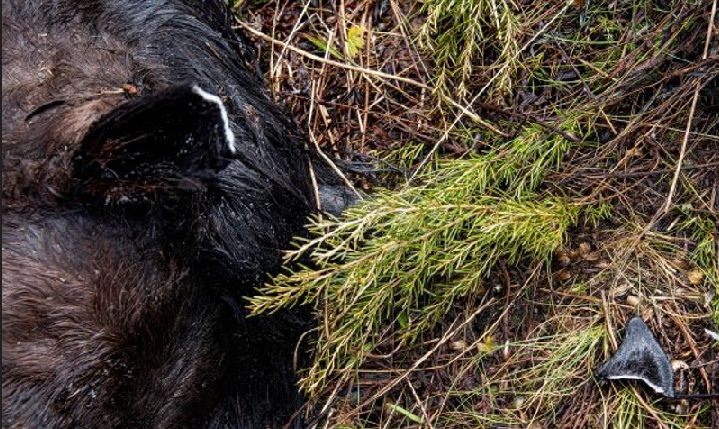
The tips of the ears of many of the dead wild horses had been removed. Photo: Supplied.
Mr Cochran said his military and intelligence background gave him another insight into the way the horse carcasses were lying with heads uphill and in close, even proximity to each other.
“It wouldn’t surprise me if they were shot elsewhere and moved by helicopter to the spot they were found,” he said. “They were well disguised, looked like they were resting and in fact the hiker that found them thought they were sleeping.”
Mr Cochran said DNA had been taken from each carcass for research purposes.
The NPWS says it has a legal obligation to implement the Wild Horse Heritage Management Plan, which calls for the reduction of wild horses in KNP from more than 14,000 (2020 estimate) to 3000 by June 2027.
The plan was agreed to after more than two years of engagement with the community, including advice from a dedicated community advisory panel, a scientific advisory panel, the RSPCA (NSW) and other experts, and Aboriginal stakeholders.
“There is clear scientific consensus that the number of wild horses in Kosciuszko National Park is too high and that any failure to reduce the population will result in significant, long-term damage to a globally important national park,” it said in a statement.
To meet the legal requirements, the NPWS said it must undertake a range of control measures, including trapping and rehoming – which are prioritised – and ground shooting. Aerial shooting is not permitted.
“The implementation of wild horse control is a sensitive and challenging issue for everyone,” its statement said.
The NPWS says stringent measures are in place to ensure public safety during control operations, with formal safety risk analyses, active reconnaissance of areas before control measures begin, and strict controls on where and when operations can occur.
An annual survey of the wild horse population, consistent with world’s best practice and subject to scientific peer review, would be conducted annually, the NPWS said.
The next survey will be carried out in the last quarter of 2022.
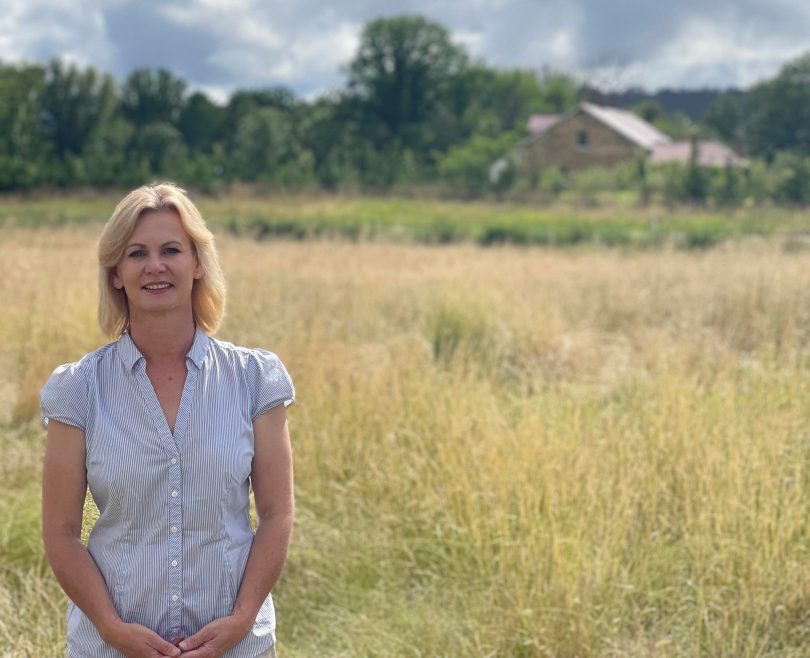
Member for Monaro Nichole Overall has called for an immediate assessment of the implementation of the Kosciuszko Wild Horse Heritage Management Plan. Photo: NSW Nationals.
Member for Monaro Nichole Overall has called for an immediate assessment of the implementation of the Kosciuszko Wild Horse Heritage Management Plan.
“Having seen the photographs of the horses found by a bushwalker, and on being made aware of more that have now been found in another public area, I’ve called on the Minister for the Environment to take action and ensure the plan is being enacted as agreed,” Mrs Overall said.
Having spoken with affected community members, she said, in their view, elements of what had been occurring had not been in accordance with the management plan that had been agreed to following years of consultation.
“Our Snowy Mountain brumbies have been a part of life in the Monaro for generations,” Mrs Overall said.
Many people, she said, had worked long and hard on reaching a consensus around the management plan’s intent, recognising the historic significance of the brumbies while protecting the park’s most vulnerable wilderness areas.
The NSW Government passed the Kosciuszko Wild Horse Heritage Act in 2018, recognising and protecting wild horse heritage values while enabling active management of the wild horses to reduce their impact on the park’s fragile environment, she said.
“Another primary concern put forward is the environmental impacts of horses being left in such circumstances throughout the national park,” Mrs Overall said.
The issue of predation from numerous other feral animals – including wild dogs, pigs, foxes and cats – all feeding on the dead animals, and the impact of this, both environmentally and visually for park visitors, had also been raised, she said.
“I know how important this issue is to our community,” Mrs Overall said. “I have already spoken to the Minister and I will continue to fight to ensure the community’s expectations are being addressed.”







